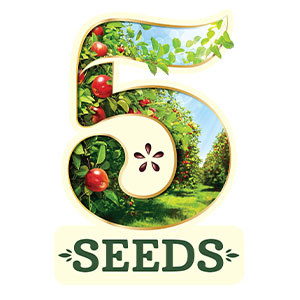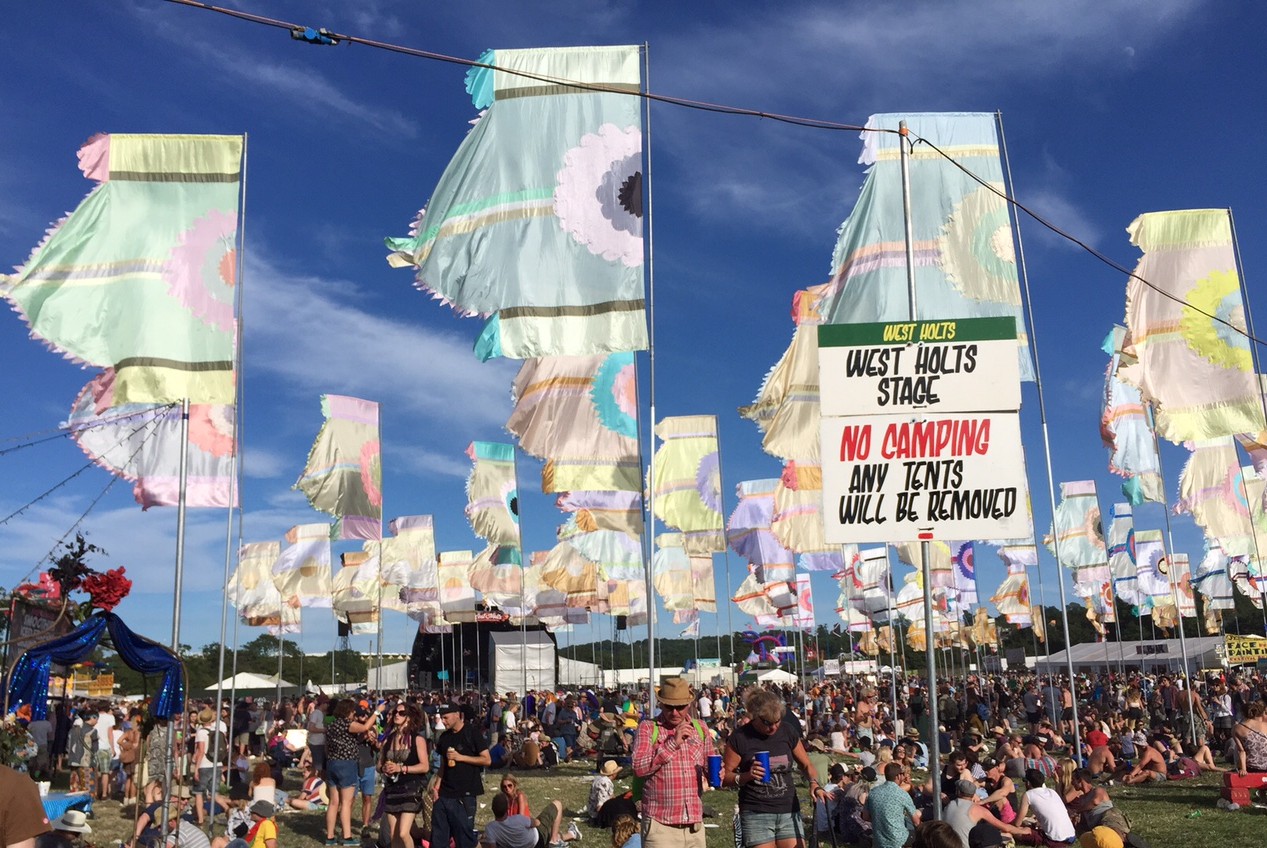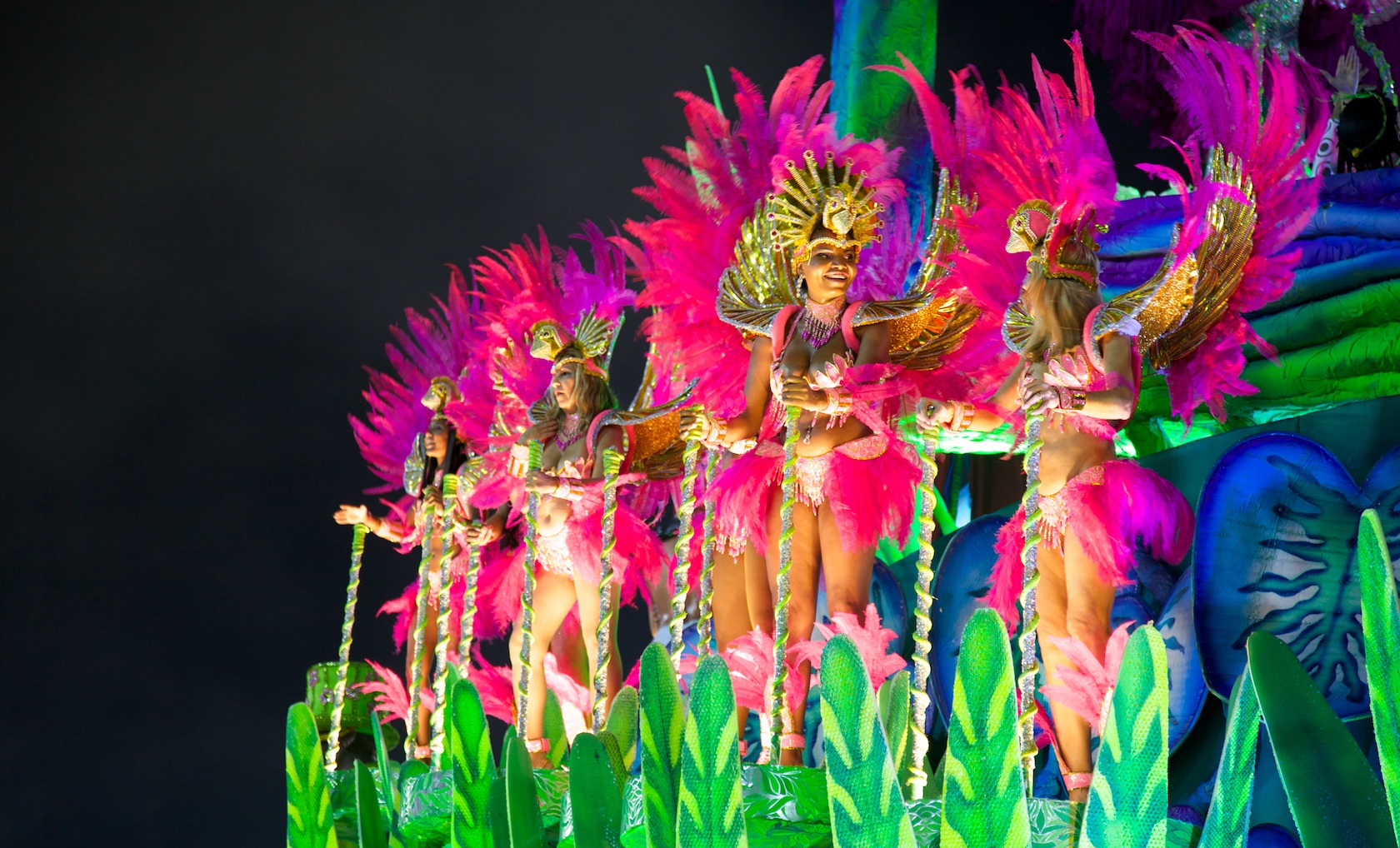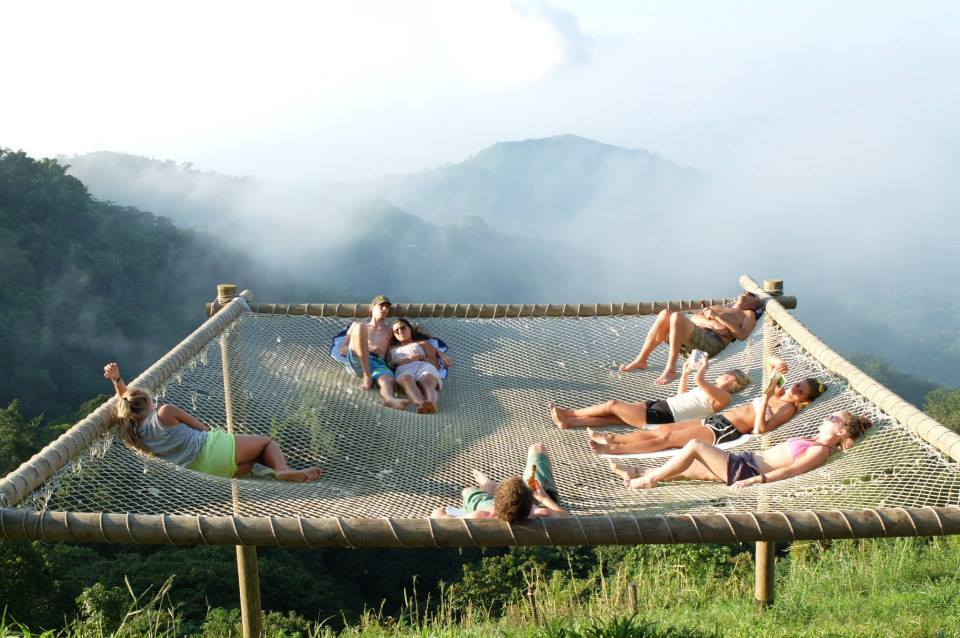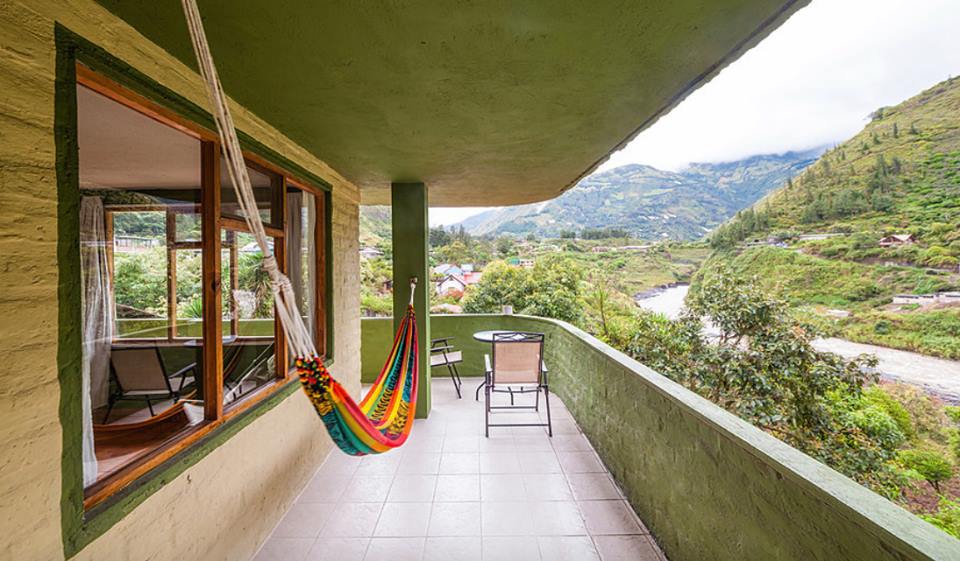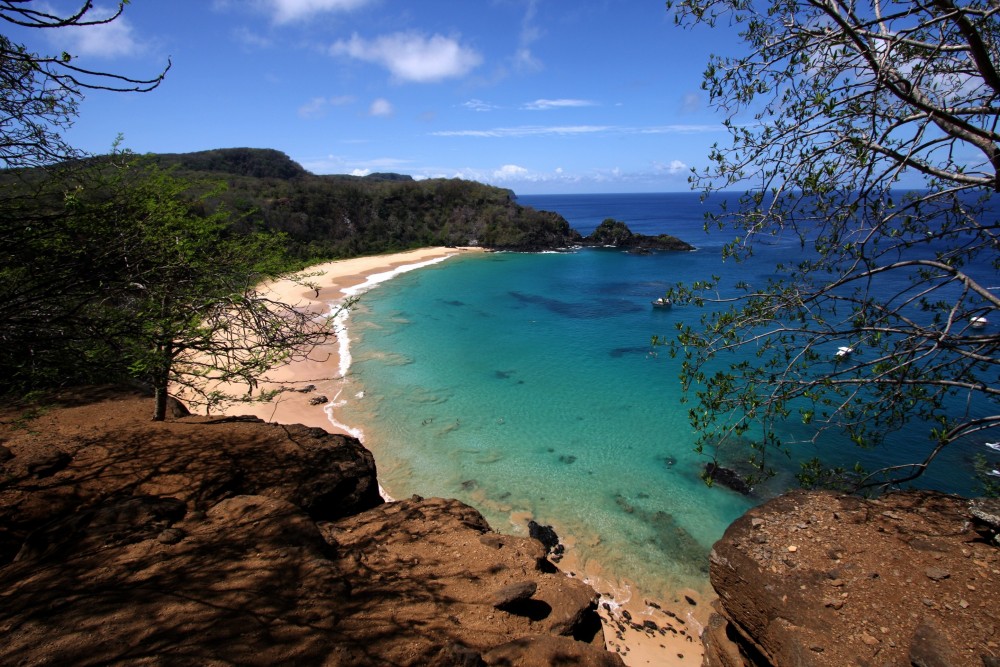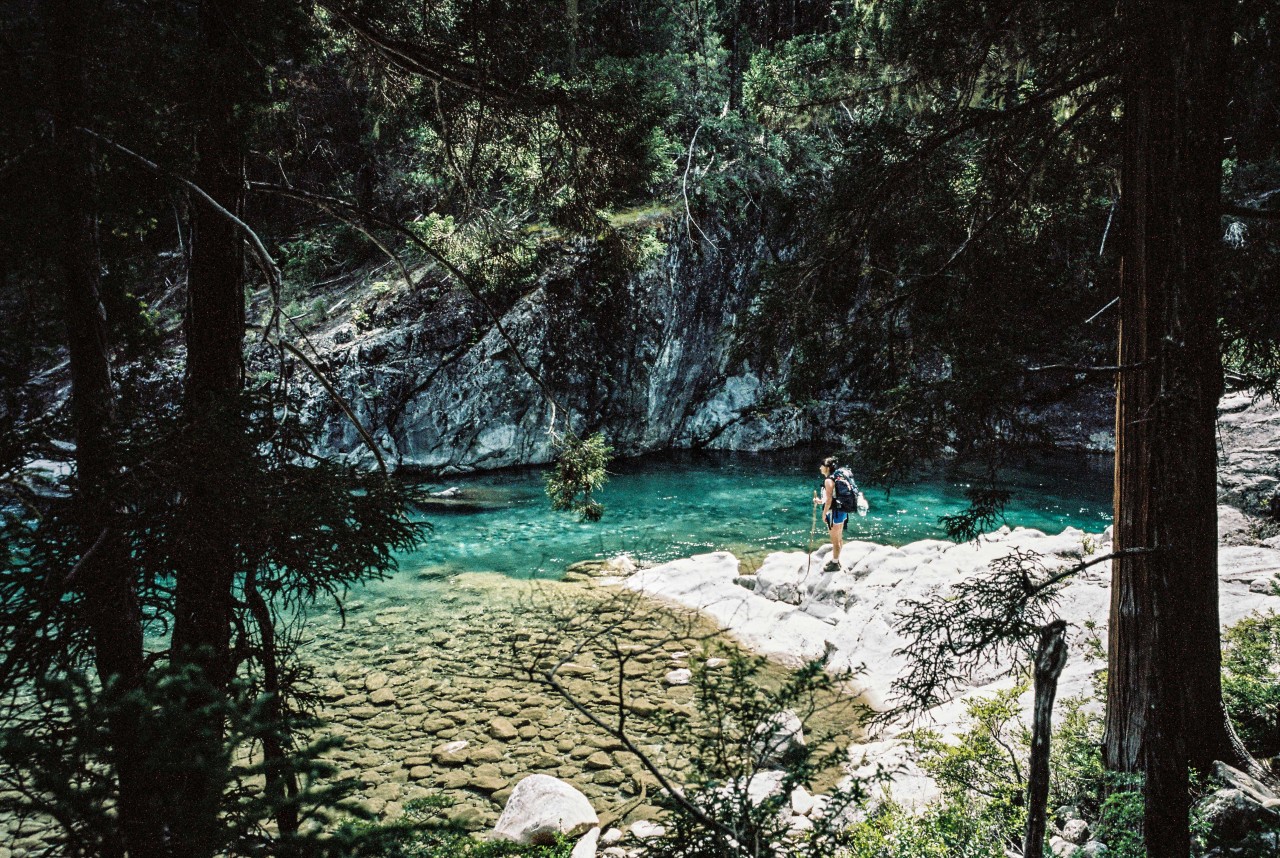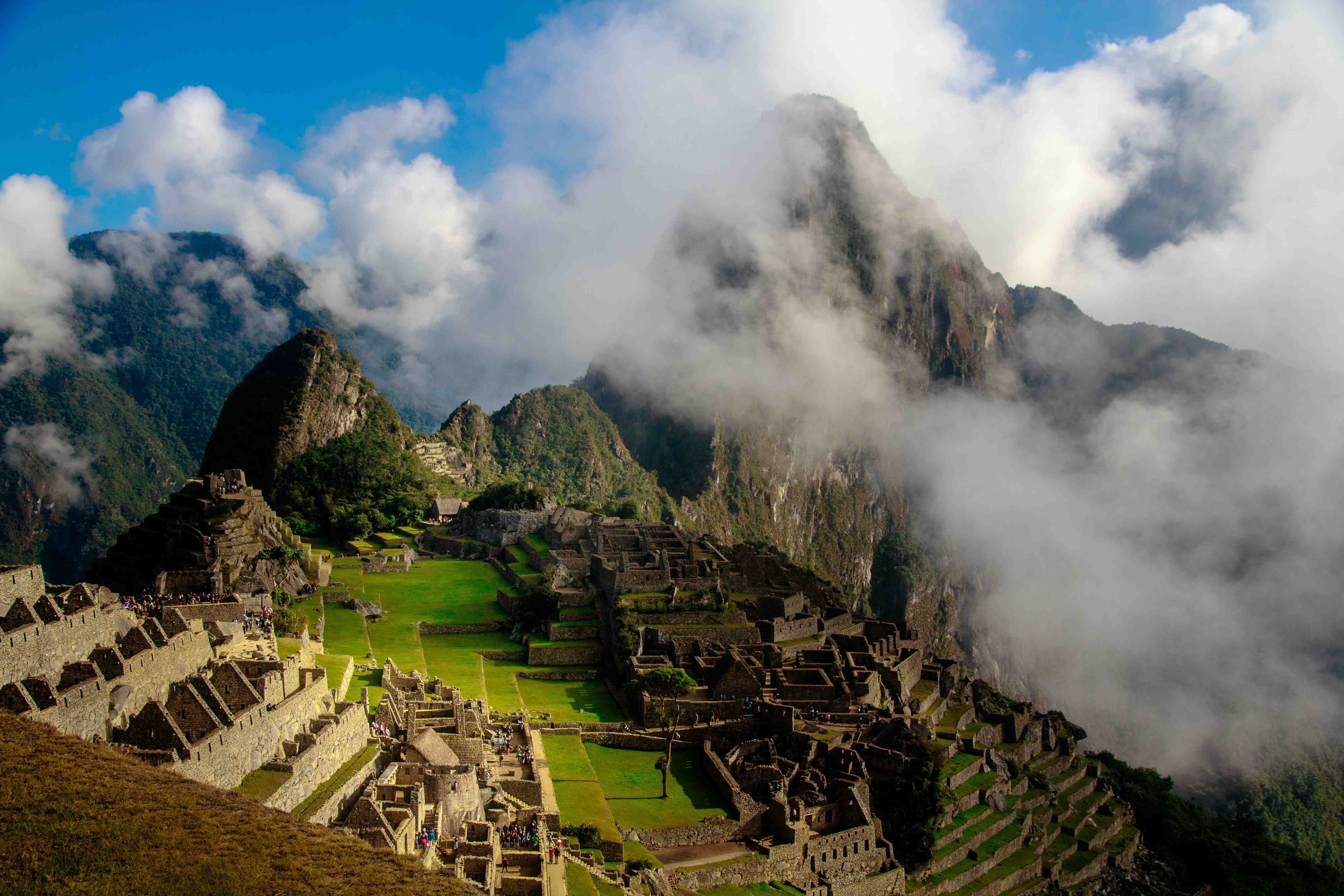Not Your Ordinary Guide To Colombia
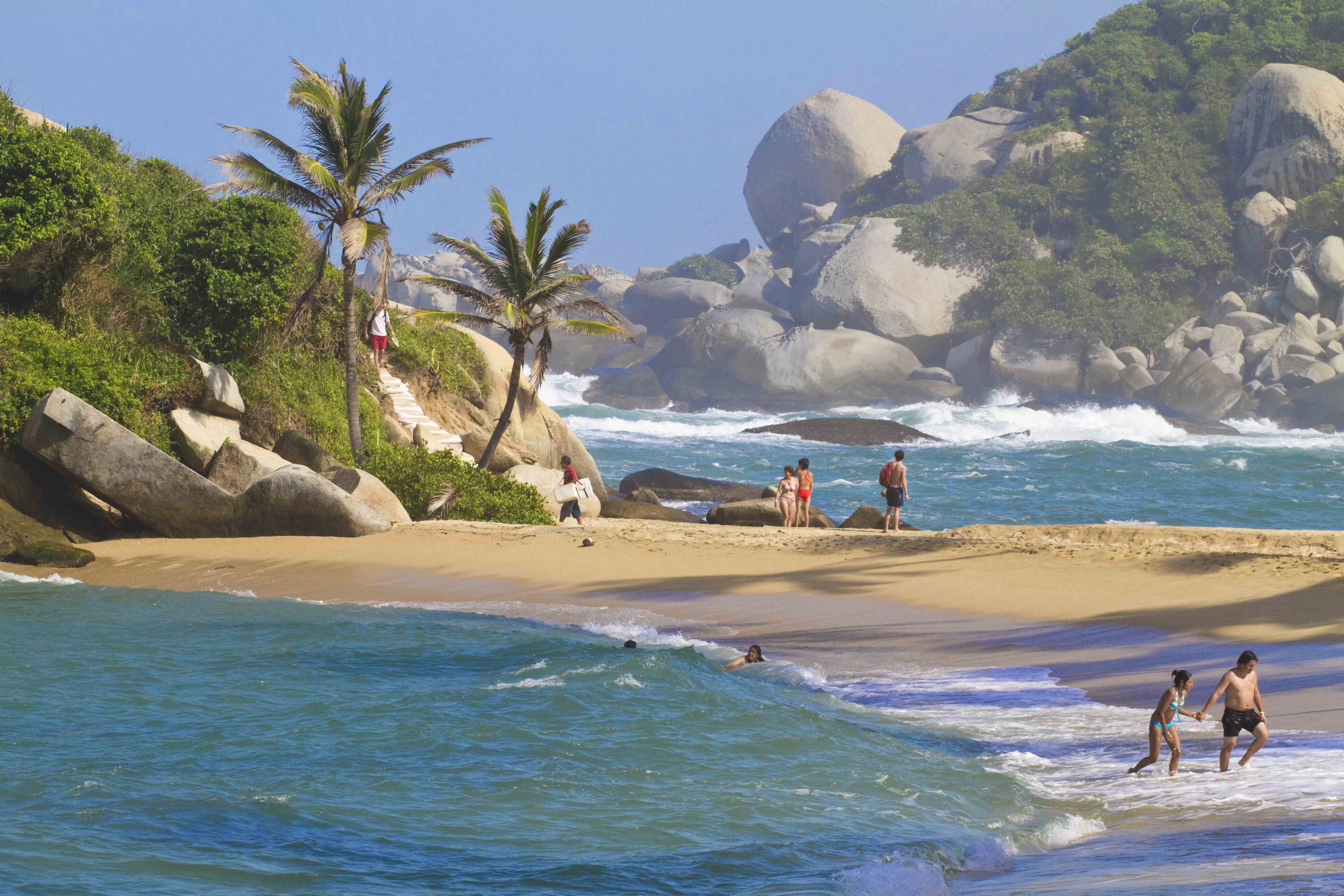
5 Seeds cider is all about that summer feeling of kicking back with your friends and enjoying good times and new experiences.
Simone Ubaldi is a ghostwriter, music journalist, film critic and…
Colombia is one of the world’s 17 “megadiverse” countries; a hotbed of life on earth, with one coast on the Pacific, one coast in the Caribbean and the snow-capped peaks of the Andes rising up out of arid desert. With a mixed racial history but a joyful Latin American heart, it’s a country where people work to live, not the other way around. Salsa and arepa come cheap, and Colombians like to eat, drink and dance until dawn.
With its sketchy modern history in the rear view mirror, Colombia has become a hot spot for world travellers. From the cobblestoned streets of Cartagena to the sprawling, ambitious metropolis that is Bogota, the country has this unique and very beautiful vibe. There are plenty of weird and wonderful things to keep you occupied, on and off the beaten track.
Snorkelling and sensational sandwiches
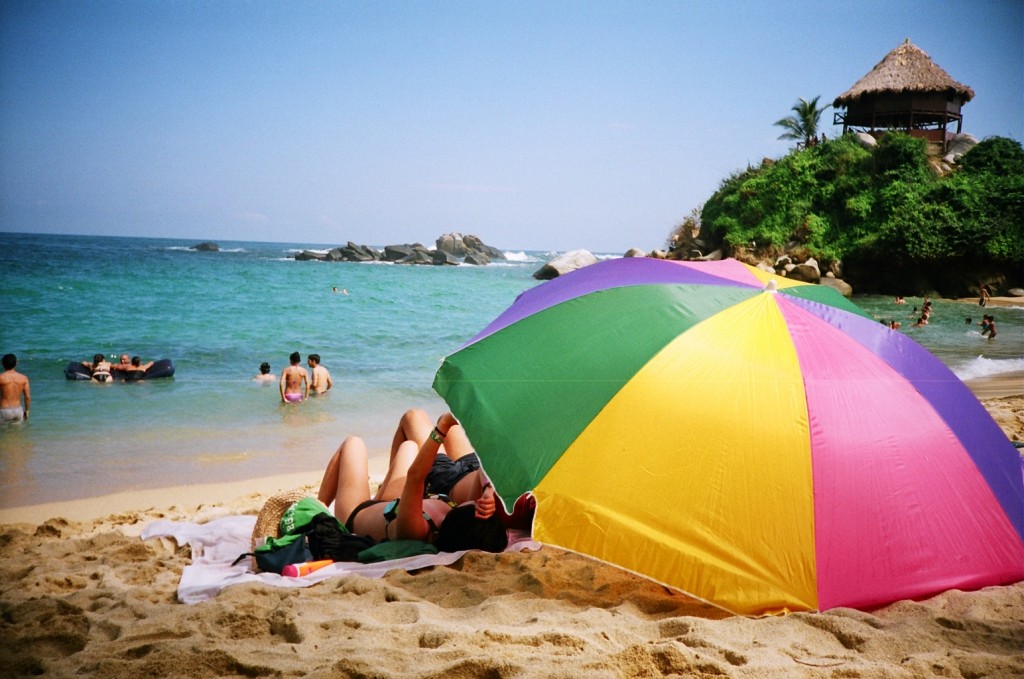
Colombia is dotted with beautiful coastal towns and Taganga has been a must-stop on the Colombian backpacker trail for over a decade. Wedged on Colombia’s Carribbean coast between Santa Marta and the Tayrona National Park, Taganga Bay is blessed with warm water and fringed by lush mountains, with waterfalls and lookouts hidden amongst the trees.
With more than a dozen dive shops in town, it’s is a popular spot for people looking to get their PADI Open Water certificate, and snorkelling off the beach is a crowded but excellent past time.
You can boat trip out to the National Park beaches, or take a 20 minute hike to the lovely Playa Grande, but make sure you’re back in town when your tummy starts rumbling. By far and away, the best thing about this city is Los Baguettes de Maria, a sandwich shop right on the main beach. Crazy good, and crazy large, their subs are filled with fresh, flavour bursting meats and salad, and served with a brain-exploding mango juice that has a similar effect to Berocca/a taser.
The streets of boho Bogota
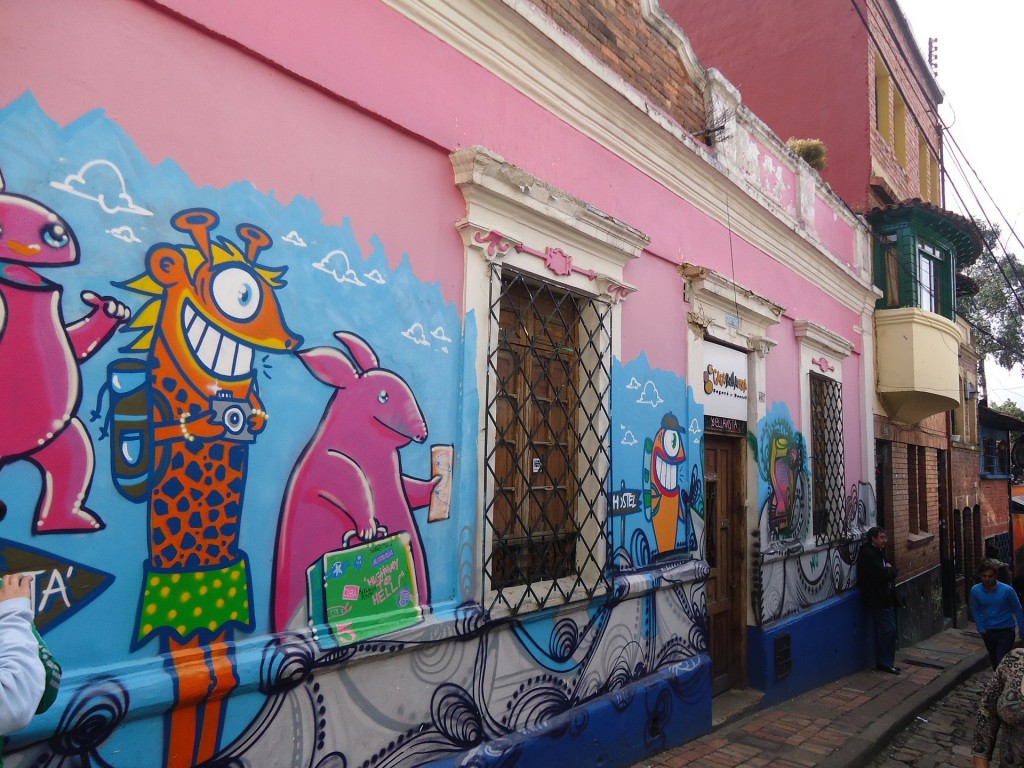
La Candelaria, Bogota’s historical ‘hood, is rife with curiosities. The sloping streets are home to the very cool Museo Botero, dedicated to Colombia’s premiere sculptor, and the Museo Del Oro, which houses the world’s biggest collection of Indigenous South American goldwork – so much shiny, shiny gold. You can visit the home of Jose Silva, the preeminent Colombian poet who shot himself through the heart, or ride the funicular to Monserrate. But by far the coolest thing to do in La Candelaria is wander around and check out the street art. The district is rammed with stencil and spray work, with gems threaded among the graffiti tags. From portraiture to political satire, all the youthful energy of Colombia’s artists is splashed up on the walls.
When you’re done with the art, be sure to walk down Callejon del Embudo to sample the local hooch. Chicha is a fermented maize drink with Indigenous heritage, drunk from coconut shells in La Candelaria’s hole-in-the-wall bars, by university students who can’t afford real drinks. It’s sour as hell, frankly kind of unpleasant, but it’s certainly value for money.
Tejo go boom
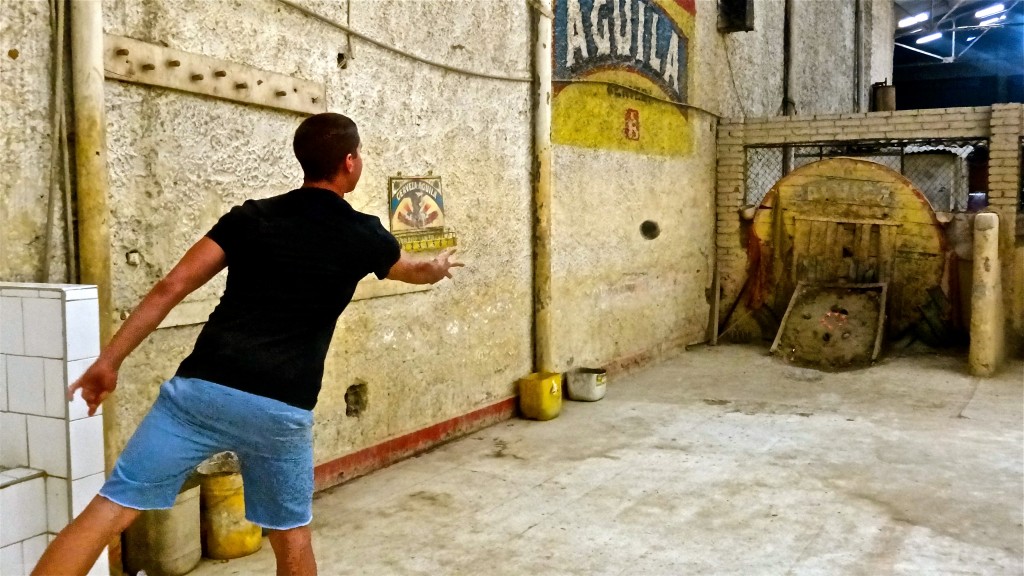
Colombia’s national sport involves good aim, cheer and small packets of explosives. To play tejo, you have to haul a heavy iron disc at a clay target which is embedded with small paper packages. The packages are filled with gunpowder; if you hit one, they go boom. It’s a very simple and yet ridiculously enjoyable concept, heightened by the affable vibe that is mandatory with the locals.
Not everybody laughs and tejos – the professionals teams are a real dour looking bunch – but for most people it’s a social sport, heavy on the social. In fact, at most of the social tejo clubs, you don’t pay to play, but you have to pay for accompanying drinks. Be warned: this sport is harder than it looks and dropping an iron disc on your foot is as about painful as it sounds.
You can catch tejo tournaments in parks or on the street, but the best place to go and play in Bogota is the Gaitan district, along Calle 76, Calle 77 and Carrera 24.
Guinea pig racing
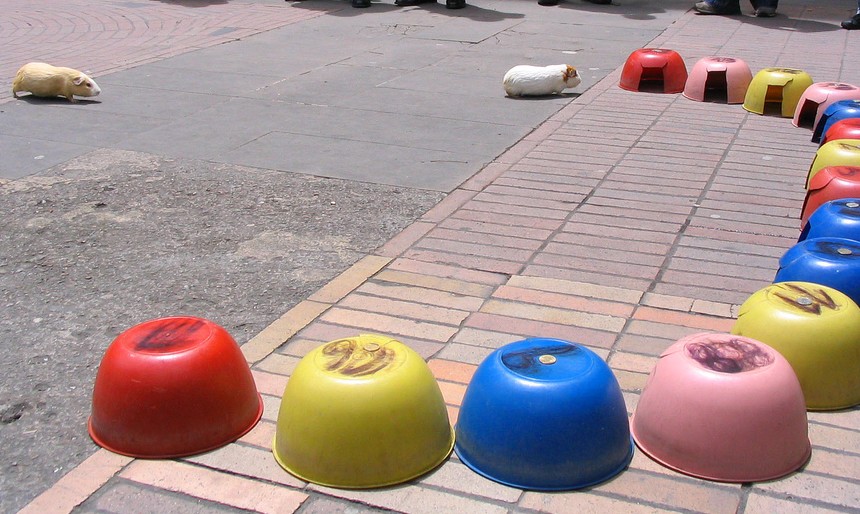
Stroll long enough down Bogota’s endless Carrera 7 and you’ll see pretty much everything the country has to offer, including the delightful, slightly addictive, ethically challenged Guinea Pig Gamble. The set-up is simple and aesthetically pleasant: a bunch of colourful plastic bowls are upended and scattered on the ground, each with a guinea pig-sized hole in one side and a number on top. You pick a bowl and place your bet, and the microphone-wielding MC sets the little fur ball loose. If the guinea pig walks into your bowl, you quintuple your money. If not, you have made a very charitable donation to watch a guinea pig run around in circles. Win/win.
Big-butt ant snacks
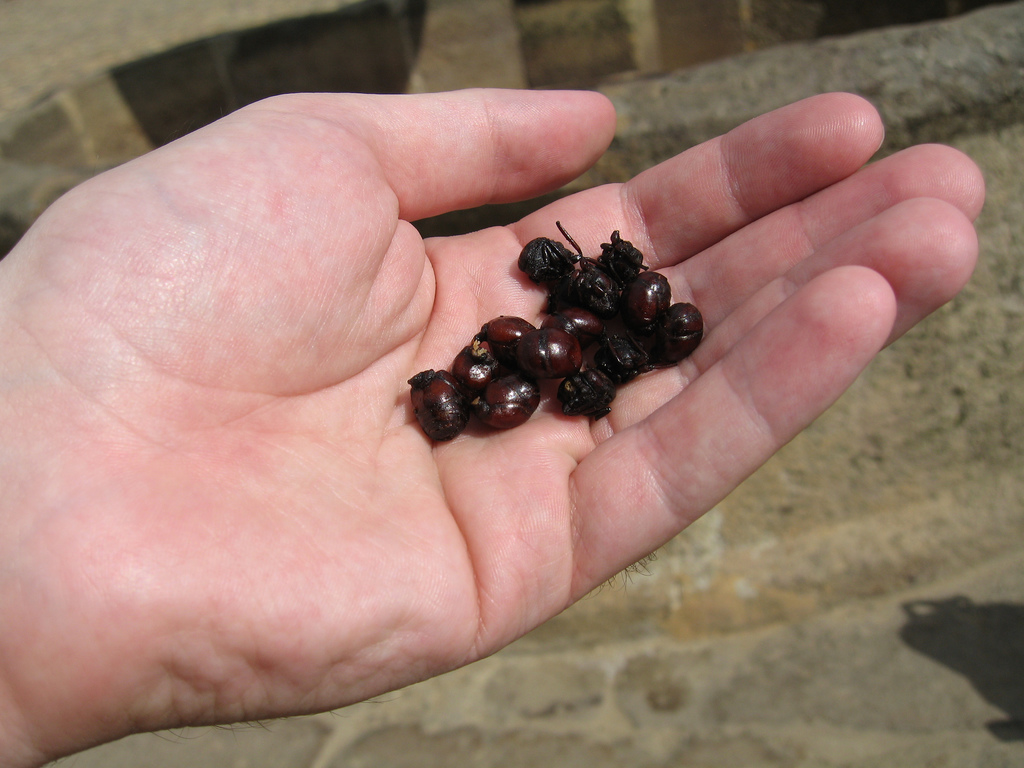
In the region of Santander, north east of Bogota, the locals eat hormigas culonas ants, which translates literally as ‘big butt’ ants. They look a bit like blueberries from a distance, but on closer inspection, they are very clearly ants. Served roasted or fried, with a generous rain of salt, they are low-fat, high protein power bubbles, only with little anty feet attached that tend to get stuck in your teeth. You can buy them in a plastic cup from any street corner in Spring (April-May), and crunch them like popcorn as you wander away. DELICIOUS.
Mud bath in the mouth of hell
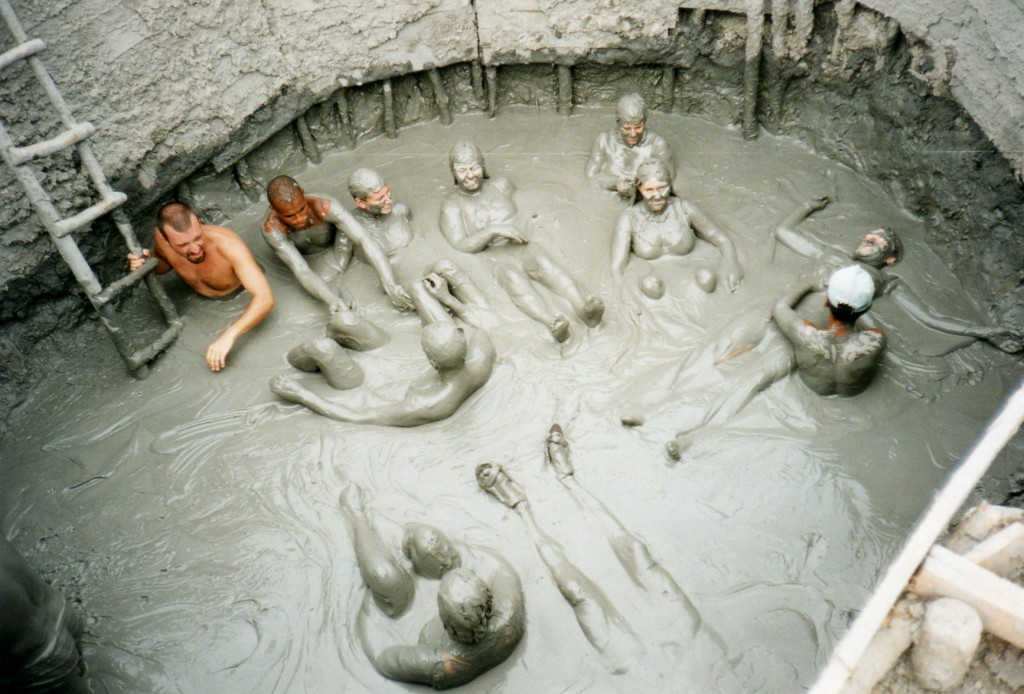
Volcan de Lodo El Totumo is an active mud volcano in northern Colombia, around 50 kilometres north of Cartagena. You can climb right into it and swim around like a pig in poop. Only it isn’t poop, it is a mineral rich mystery of the universe that is so dense it keeps you afloat.
Legend has it some old priest, failing to understand the fundamentals of geology, threw holy water into the once-active volcano, believing its lava to be the work of the devil. The lava turned to mud and voila, a spa for penny-pinching backpackers was born.
Pablo’s Place – you know, for kids!
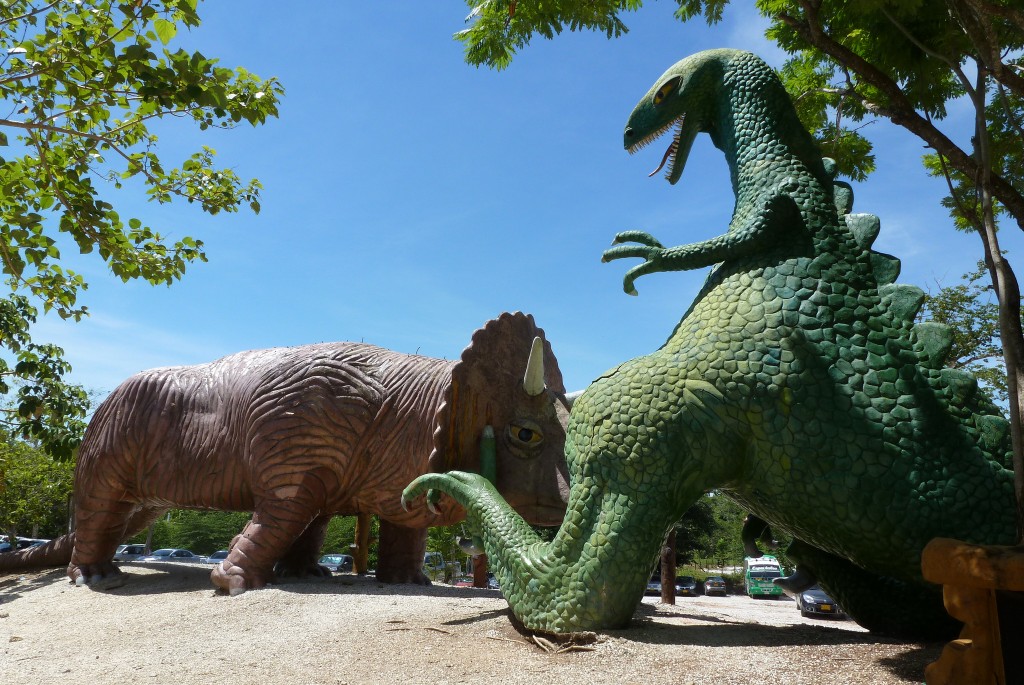
One of the looming figures in Colombia’s fraught history, Pablo Escobar was the world’s most famous drug baron. The seat of his empire was Hacienda Napoles, a vast estate in Puerto Triunfo about 320 kilometres northwest of Bogota. It was a monument to Escobar’s madness, where illegally imported African animals roamed free and vintage cars piled up in corners, all laid to waste when the king criminal died in 1993.
For a long while, nobody knew what to do with the place. Escobar’s herd of hippos broke loose and began terrorising the countryside, his life-sized dinosaur statues started to rust and the family villa fell into ruin. Then in the mid-noughties, some entrepreneurial types decide to revive Hacienda Napoles – and by revive, we mean they turned it into a children’s theme park. Complete with water slides, a weird African-themed arena and a discreet but triumphant museum that celebrates Escobar’s downfall with a large photograph of his dead body, it’s fun for the whole family. The Cessna aircraft that hangs over the front gate is just your first stop in a whole world of weird.
(Lead image: Jane Sweeney/Getty Images)
When you look at the world differently, opportunities open up. We’ve partnered with 5 Seeds Cider to offer fresh perspectives and out of the ordinary stories on travel.
Simone Ubaldi is a ghostwriter, music journalist, film critic and frequent flyer. She has written for The Age, The Monthly, triple j Mag, Paper Sea, Faster Louder and various other publications, and appeared on ABC Radio National, triple j and Melbourne's 3RRR FM. She has co-authored four books, including memoirs of Bon Scott and Mark 'Chopper' Read, and she stashes a lot of her writing here.

